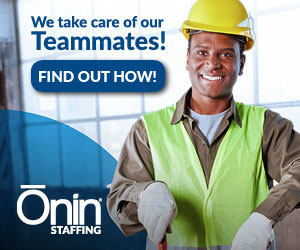Last year I heard a local radio host discussing Saban’s recruiting philosophy. Evidently, Saban tells his scouts to find him “ands” and not “buts” — it’s a recruiting mantra at the University of Alabama.
According to Saban, a “but” is the guy who is a talented athlete, dominant in his position, runs a 4.2 / 40, BUT perhaps he has been in trouble with the law, is not a good team player, or has a questionable work ethic.
An “and,” on the other hand, has the requisite athletic talent AND is involved in his community, is a leader, is committed to his family, works hard at his studies, etc.
This concept is catchy and really resonated with me. As I shared it, I found that other people liked it as well. In fact, Ōnin’s Home Office recruiter even posted “ANDs not BUTs” on his office wall.
At first blush, this “ands-not-buts” doctrine seems really sound; however, as I thought about it and talked to others about its application, it hit me that for those of us who live and work in “Realsville,” a strict “ands-not-buts” strategy may not actually be practical or even optimal.
Let’s face it. Most of us don’t run national champion programs with unlimited resources and the magnetic talent draw of the Crimson Tide. What if your program is at the bottom of the Mountain West Conference rather than the top of the SEC? Maybe you run the business equivalent of a division three football program like UW Eau Claire.
Shoot, some of us run the equivalent of a county high school JV football program.
It is great to have an understanding of the “and-not-buts” interplay, and big-time companies like Google, AT&T, Apple, etc. are in a position where they should really never settle. Fortune 500 firms who follow Saban’s philosophy will certainly reap the benefits of a culture of “and.”
Look at Texas A&M in 2013, who built a team around the talents of Johnny Manzelle, a hyper-talented player BUT— as most of us know, he has a ton of personal issues. A&M even beat Alabama in 2013, but their greatness did not endure. Stacking the deck with talented “buts” will get you some wins, but will not build enduring greatness whether we are talking football or business.
The Start-up
Back to where most of us live: “Realsville.” I propose the strategic and incremental use of “buts” in a fledgling organization as a sound practice. In fact, I have seen start-up businesses and new markets fail because of an overemphasis on “ands.”
Back in the early days of our business, if we found someone who could open the door to new business or a killer recruiter who could deliver high volume results quickly, we’d generally hire them.
No one cared if they had a drinking problem and an unstable personality. In the early days, we were fighting for survival.
Staffing is pretty simple: We secure job orders (sales) and fill those job orders (service). If you do well in those two areas, you have a viable business. We would simply measure the size of their “but” against the opportunity or value they brought to the table.
We became good at managing around weaknesses and playing to strengths, and we even helped some folks develop better habits along the way. I was a “but,” for crying out loud — a college dropout whose spotty sales career revolved around drumming gigs as I struggled to make a living as a musician.
I’m afraid I wouldn’t make it through our hiring process today; but, thankfully, our partners saw past my “but” and took a chance on me.
A mistake I see early on with expansion market managers in our company, as well as aspiring entrepreneurs I have met, is that they hire and hang onto the person they need five years from now, today. They latch onto a character, or maybe a specialized talent like training or process compliance, and think, “Wow, when I have five offices, this person is going to be an awesome trainer.”
The problem is that in a startup, you don’t need a trainer, compliance officer, CIO or CMO; you need to cover basic business functions now in the most cost-effective manner possible.
Obviously, there are some “buts” that are so big they cannot be overlooked, even in the early days. I am not endorsing using people either — the employment relationship must be a win-win.
That said, start-ups need to keep a laser sharp focus on core economic drivers and growth goals, hire to fill those functions in the most cost-effective manner possible, and face the reality that, in many cases, the people you hire early are not the ones who will be with you in three to five years.
Business Adolescence – Division 3 Ball
Entrepreneurs and “intrapreneurs” who have taken expansion markets and new businesses from zero to profitability understand how to leverage talented “buts” to get their respective businesses off the ground.
However, if their “ands-not-buts” strategy fails to evolve, the business will hit a ceiling. If we are not careful, our business can start looking like the land of misfit toys — unable to move to the next phase of functional maturity.
The early days are about the leader or entrepreneur pulling the business up by her/his bootstraps. It is on them to get the fire started. Once profitable, we need to really start thinking about replicating ourselves in others.
During the time I had two or three branches to manage, I read somewhere, “The person you hire today is the company you become tomorrow.” I am not sure who said it, but it hit home.
I became determined to do a better job hiring. We needed to identify the “ands” we had in our company already, get rid of some of our biggest “buts,” and find some more “ands” in order to build an enduring business.
During this adolescent phase of business, we did not totally embrace the strict Saban “ands-not-buts” doctrine, but the reality is we were still playing Division 3 ball. The ratio of “ands-not-buts” simply shifted toward the “ands”. Again we defined our economic drivers and focused our hiring strategy around them.
The adolescent business must define what it means to win a championship at this level — what does it look like to “win the conference?” Maybe this is a certain revenue or profit level; maybe it is a growth rate or level of market penetration.
It is your business so you can decide. Once we figure this out, we then need to figure out who we need on the team to get us there. This team will have some superstar “buts” and will also have enough “ands” to keep things functional.
It is amazing to me how many managers and entrepreneurs cap out because they just can’t embrace the “and” reality. If your business unit is profitable but seems to have hit a ceiling, you spend most of your time putting out fires, complaining that you “can’t find good employees nowadays” — those are good indications your “ands-not-buts” ratio is out of whack.
It may be that the leader’s “but” is so big that “ands” run for the door as soon as possible. In some cases, the leader has a fear of hiring people who are better than them. In other cases, the leader subconsciously perpetuates the “big-but” culture because of a perverted sense of purpose they derive from it. No matter the underlying causes, many languish their entire careers, unable to advance their enterprises because they simply can’t or won’t adjust their “ands-not-buts” ratio.
The question of how to create an environment that attracts and develops “ands” is too big to tackle in this article. The bottom line is this: if you are ever going to win your Division 3 Conference championship, you must do whatever it takes to learn, to hire and retain “ands” or be forever mediocre — a struggling program in a mid-level conference.
Competing for a National Championship
It is not everyone’s ambition to grow a big company and to compete for a national title. We all need to define success our own way. No matter how you define it, getting to the place where you are surrounded by “ands” — people who contribute to the richness of your company culture — is an excellent goal. No matter the size of your enterprise or the scope of your role, a healthy corporate ecosystem is good for business and great for your quality of life.
The Ōnin Group has never won a national championship. We are not at that level yet, so I will not claim to know how to win one until we get there. We still have plenty of “buts” serving a strategic purpose. We manage around those weaknesses and our ratio is trending in the right direction. The bigger we get, the more we are able to adhere to the Saban “ands-not-buts” doctrine.
The beauty of business is that we have more time with our talent than the typical college football program. As we march toward a national title, it is apparent a key element of success on a national scale will be developing our own “ands.” We are focused on developing our current leaders and building bench strength. If we win that national title, this may be proof that the Saban “ands-not-buts” doctrine applies to business as well as football.

Jim Weaver
The Ōnin Group
Jim Weaver is home-grown talent, having been with The Ōnin Group since 2001. Starting as a salesperson in Nashville, he has risen into the COO role as the company has grown.






